Are you pushing yourself too hard or too slow in training? Learn how to train at the right speeds so you can tire out your opponents at a pace they can’t handle.
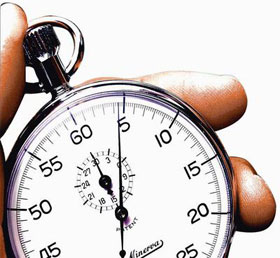
How Fast Should You Train?
The question is:
- How fast or how intense should your training pace be?
Some boxing trainers believe in going all out while others believe in taking it easy. Most guys think the perfect training pace is somewhere between screaming your lungs out and falling asleep on the stationary bike. The smart boxers think figuring out the perfect pace is all about balancing your energy use so you get tired right as the fight ends.
The perfect training pace actually…
…doesn’t exist.
Max Pace and Resting Pace
There is no such thing as the perfect training pace. Train at any pace you want and I guarantee your next fight will either be slower or faster than what you trained for. And so I introduce to you the concept of training at two different speeds.
Resting Pace
Your resting pace is the pace you can keep up forever. Everyone should have a resting pace. Actually, let me rephrase that. Everyone, MUST, have a resting pace. This is the pace you can go at and not get tired. For some people, a resting pace is 3 punches every 10 seconds and lots of walking. For better athletes, a resting pace might be 5 soft punches and 2 hard punches every 10 seconds. Think of it as a “jogging pace” (but for punching instead of running). You need to establish a resting pace so that you do not come to a complete stop when you get tired.
Establishing a resting pace,
allows you to fight even when you are completely tired.
Using your Resting Pace
You fight at your resting pace when you’re not actively engaging your opponent. Your fighting pace does not go any slower than this. Maybe you’re looking to catch your breath or maybe you guys are in between exchanges. Or maybe you’re just looking to warm-up. Whatever the case may be, you use your resting pace whenever you’re not actively fighting. You are not allowed to get tired and stand still, use your resting pace!
Max Pace
Your max pace is your sprint pace. The speed at which you go all out with 100% intensity. Some can throw 15 punches in 10 seconds, where others can throw 25 punches in 10 seconds. Whatever it is, you’re going all out 100% giving it everything you’ve got. It’s your MAX pace. You need to challenge and push your maximum speed regularly in the gym. It increases your overall cardio and performance levels to a whole new level. Having this higher gear of performance allows you to outfight your opponent during critical exchanges.
Increasing your max pace,
increases your speed to win punch exchanges.
Using your Max Pace
Anytime you seriously engage your opponent is when you should turn into high gear. Maybe you see an opening and want to seize the moment. Perhaps your opponent’s defense is so tight you can only crack through with a really fast combination. Or maybe you’re taking punches along the ropes. Or maybe you’re both exchanging punches at the end of a close round. Training at 100% intensity allows you to win those crucial punch exchanges.
Training at your max pace,
also INCREASES your resting pace!
There is also one more thing about regularly pushing your max pace. Having a faster max pace also means you will have a faster resting pace. Think about it. If your resting pace is 50% of your max pace, and you raise your max pace to a whole new level–guess what, you’ve also increased your resting pace!
Actual Fighting Pace
What about the actual fighting pace? The actual fighting pace is going to change as you already know, and you’ll be ready if you’ve trained at your resting pace as well as your max pace. You’ll be able switch gears during the fight and adjust comfortably to whatever happens. Best of all, you’ll be able to switch-up the pace to prematurely tire out your opponent.
Win By Switching Up The Pace
Many fighters do not have both a max pace and a resting pace because of their training attitudes. You can test this by applying both your max pace and resting pace during the fight. The moment you find their weakness, apply the right strategy to tire them out.
Beating Max Pace Fighters
Most fighters train at high intensity, so they don’t have a resting pace. They have been taught to train at 100% at ALL TIMES. It’s all they know how to do and every workout is focused on going as fast as possible. On one hand, they’re improving their maximum power, maximum energy output, and overall conditioning. The drawback, however, is that they’re only learning how to waste energy as fast as possible.
Exploiting the max pace fighter is easy,
you just have to get out of the way.
You’ll know a max pace fighter when you see one, he’s always throwing with 100% power. I call these guys the mouse-traps. By “mouse-trap”, I mean that they’re always loaded up and ready to spring at you with 100% power. You beat them by using your resting pace. Move in and out and hit them with lighter punches. You want to be the clever little mouse that nibbles on the cheese and gets out before the trap springs. Use your resting pace to keep going in and out, staying calm, as you set off his hardest punches over and over. It won’t be long before he gets tired; after all, he IS punching a lot harder than you are. The easiest way to tell if a max pace fighter is tired is when he’s not doing anything. (He doesn’t have a resting pace, remember?) And once he’s tired, you come in with your max pace and pound him into the canvas.
Beating Resting Pace Fighters
These are the chill and sometimes lazy boxers in the gym. They never go 100% at anything because they think they’ll never get tired as long as they stay relaxed and only go 50%…forever. Although it is smart to conserve your energy, I do believe that you need to challenge your max pace every now and then. It’s smart to be a long-distance runner but your body needs to be able to “sprint” occasionally in the ring. The guys that don’t train their max pace will always lose exchanges or get tired quickly when forced to throw hard punches.
The chill guys are easy to identify in the ring. They move around a lot and fight with a steady rhythm that even sounds like music. It’s like, jab-jab-right, two-steps, two-slips, repeat. You can FEEL their rhythm. Beating these guys is easy, too. Just turn up the pressure.
To beat the resting pace fighter,
hit him with some hard punches and then cruise with him.
Hit him HARD a few times, make him panic. Make him get uncharacteristically wild. Let him fly out of his shell and try to match you with a giant combo. Then let the pace settle down again. Let him get comfortable, then come in again and force him to exchange punches again. You’re being smart by not wasting all your energy on a guy that’s not spending any. You’re also saving energy but mixing in some intense exchanges here and there. Get him to fight at a higher pace than what he’s use to training at. He tires out faster because he’s not use to fighting at higher speeds, his resting pace becomes so slow that it’s ineffective and you can jump all over him for the easy KO. (You don’t have to out-score the guy, you just have to raise his fighting pace to tire him out.)
Beating the Switch-Pace Fighters
OH CRAP! You’ve met someone that can fight at both paces. He can fight fast with hard punches but also dance around and cruise with you at slow speed. He fights when you fight and rests when you rest. He’s not just athletic but also smart enough to match your rhythm. Ok, NOW you’ve got a tough fight.
Hurt him at MAX Pace;
Save energy at RESTING Pace.
The way to control the momentum (and thus, the fight) is to keep switching the pace. Of course you have to do it so your opponent gets tired as you’re saving energy, and your opponent gets hurt when you’re throwing hard punches. If you guys are both going fast, you switch first into a resting pace and step out as his last few punches hit air. If you’re both going slow, surprise him by switching into the high gear first and hitting with hard punches. The moment he kicks up his speed, you settle down into your resting pace again and evade. It’s a non-stop game of cat & mouse with both of you trying to get each other to commit first. Ahhh…the beauty of boxing. I love this sport!
Controlling the Fight Momentum
To be the best fighter you can possibly be, you need both a high performance max pace as well as a high performance resting pace. Both are important and both will save your butt when you’re in deep trouble. You should be alternating between the two fighting paces to find the right rhythm to defeat your opponent.
The best fighters in the world aren’t just power punchers,
they can hurt their opponents while fighting at a resting pace.
Some of the top fighters in the world have an incredible resting pace. Manny Pacquiao, Paul Williams, and Antonio Margarito can all cruise at over 100 punches a round. Or you can watch Bernard Hopkins wearing down his younger opponents. Watch him land big punches or do something crazy to keep his opponents on edge, and then he’ll walk around to buy time.
Many of the greatest fights out there have been won because one boxer knew how to switch up the pace against the other boxer. Next time you watch a fight, try to watch not only who’s going faster or slower, but who is more relaxed during the pace changes. See which fighter is over-commmitted and wasting energy during the pace changes.
Become an endurance fighter, with a sprint capacity.
Train hard at both paces and get use to switching between them in sparring. It’s usually not the pace that tires people out, it’s the switch that wears out fighters. Changing rhythms is punishing to the body and mind. You can practice the pace changes in many aspects of your boxing training. Add some sprints to your running or some bursts of fast punches on the heavy bag. Cranking up the intensity for even just a few seconds during your workouts can make all the difference. (This is why interval workouts are so effective at increasing performance.)
Sooner or later, you will find a guy who won’t be able to match your pace or your pace changes. And when you do, you will beat him not because you’re faster or more relaxed…but because you’re both. 😉






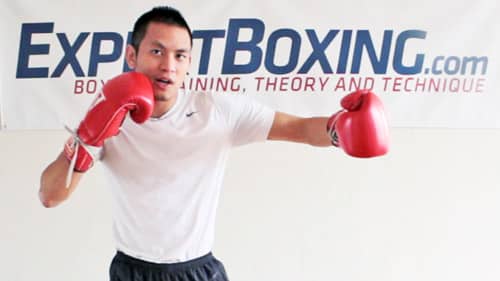
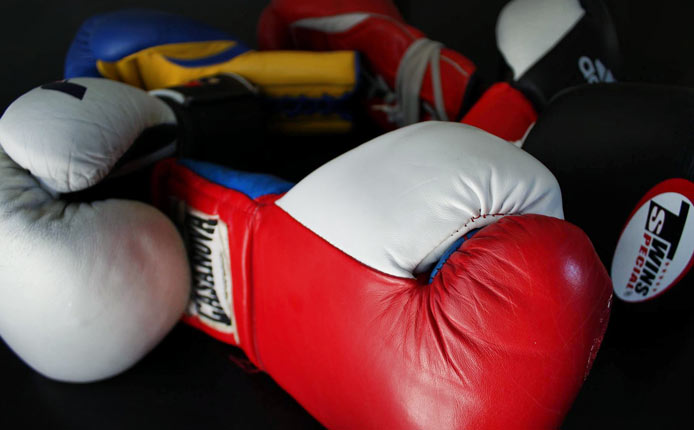
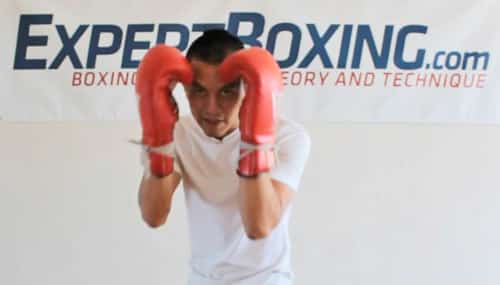
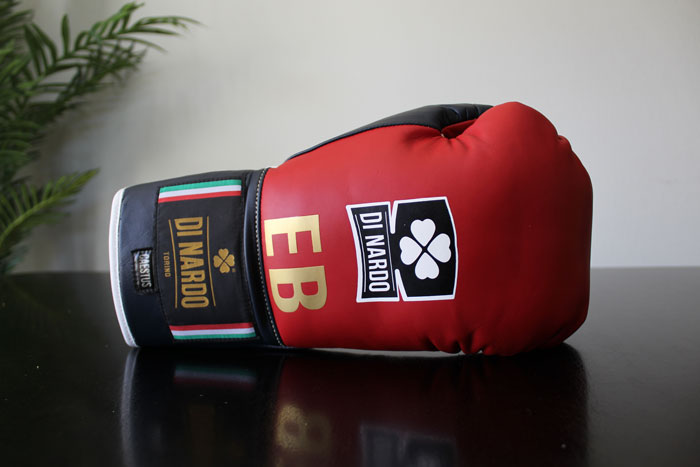
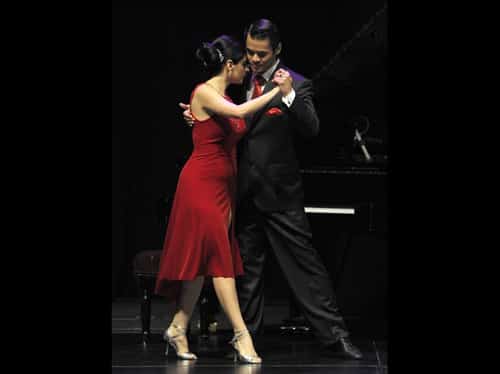
Awesome awesome article…helps me redigest my training
Great article man, I mean it’s obvious but at the same time a lot of people don’t apply this fast/slow switching pace principle, so thank you for remembering us that a lot of success in boxing depends on being a multi dimensional fighter, not just a pressure fighter or a slick boxer, but maybe a good combination of both.
Ali
Very true Johnny, I watched an Ali fight tape after reading this article. Now I understand what he really meant with Floating around like a butterfly (rest pace) and stinging in surprises like a bee (max pace).
excellent
wonderful, a great competitive technique. for different weight classes tho and different styles paces should change. sluggers automatically go all out and then rest for a while, swarmers are always all out, and boxer-punchers move about at 70%, then go to 100% in exchanges, then coast at 50%.
i think light fighters (140 and below) should train for much more pace and power, while those higher than that amount should learn to control spending power and know how to change pace. i mean the lighter fighters dont really exchange with big blows and get tired the way higher weights do.
but the points are very valid and MORE SO when we consider weight differences. i am a natural middle and when i sparred with heavyweights particularly the hard hitting heavies i found they were very vulnerable to tiring out in exchanges. if they get the better in the exchange they do well cuz i had to rest too but if they dont do well they are close to defenseless. if you cant KO them you can severely outpoint them. and the lower weight classes did the same with me, and i had to learn to conserve power and be more careful because even when they got on the bicycle it took them less energy to do so than me trying to find and exchange. so i think higher the weight, more the emphasis on resting pace and max pace being not so evident. and the lower the weight, more the emphasis on the resting pace being high cuz you will find more swarmers and sluggers who dont knock you out but can round around with you. if you fight a higher weight class, wait for him to tire out. like pacquaio. if you fight a lower weight class, dont tire yourself out like hopkins be smart.
also if youre a big puncher, PLEASE learn to lower your max pace and increase your resting pace. you need to compensate for taking shots, and so a lower max pace will automatically become more demanding in the ring. and make something count when going at your max or someone doing what coach suggested is going to have a big advantage. a higher resting pace or at least the ability to clinch will give you a breather safe from losing the round. and if you are a point getter, focus on a lower resting pace and a higher max pace. cuz face it youre not gonna trade and take shots that sap your energy. so a higher max pace isnt a bad idea. a lower resting pace will give your opponent an advantage.
Great read
Johnny, you again come up with articles that are seeing daylight for the first time. I’ve been to lots of boxing websites and instructional videos and this is the only time I’ve heard of the concepts of max pace and resting pace.
@JaketheSnake; Johnny did it again 🙂 That’s the profession field of him; every time i enter this site these brillant articles give me an whole new perspective about boxing. So; Go Johnny Go Go 😀 https://www.youtube.com/watch?v=rG_Np9j377g
coach johny picks stuff that we look at yet dont see
@radd
hes quite a boxing savant. im not sure how good a fighter he is but my experience with his articles is, INSTANTLY i remember some bout or some fight or some sparring sessioon where i got beat or beat someone with something he wrote and im like **** that guy was doing that! and i was doing that! and i didnt realise it and im pretty sure the other guy didnt either! yknow i mean if they did they never taught us and we got to the olympic trials for the middle east countries (we couldnt complete cuz u know the amateur thing :S) and no coach was saying this. but it makes amazing sense.
so coach u are a savant at this man u are a savant at boxing. how do i know ? im a medical doctor with a child iq and adult Iqs measured above 140 every single time (way above but lets not make it about that). the laymans definition is genius for that iq level specially on the rSBs (revised stanford-binet scoring) and its kind of our art, to figure stuff out. and i never figured any of this stuff out. i never even had a HINT you know. i figured SOME stuff out but man you are….dude you are the king, i challenge anyone to find a book on boxing that has this stuff. maybe these are trade secrets that others know and johnny leaking them but hey even if thats so no one else has figured this stuff out, the site is FREE for all young guys and for anyone so bro youre really evangelizing the sport. i mean with all the prima donnas and hayes and zad judahs and bob arums in the sport we really need people at grassroots who can keep the sport going. i think i was writing to this bro who wanted to know how i fought wing chun and stuff, i see the mailbag now and then and find like so many questions i asked when i was coming up and all i got was `thats for later, just work the bag’ or `itll come to you, focus focus!’ and my friend sam was smart but he had a cutoff point he knew some stuff and thats it. coach you are an all round observer man i mean the pace thing i posted earlier today and later i was like, `wow big guys tire early, small guys dont take breathers, sluggers tire real early, boxers dont tire, why didnt anyone ever pick up on this ?’
youre something special coach. 😉 cant wait to see your vids on power punching
fighting strategy
Johnny afta the drowning style, u promised me d staying in & around range[using angles] aaron pryor & pacquiao style breakdown, but I am yet to see it. I need to master both styles with drowning style being easy but not too effective fighting rangier & taller opponents, I need this one, I noticed aaron pryors style did not need much calculations but angles and the Abc punching strategy to break opppnents down. So help me perfect a mix of this together with pacquiaos bcos of the added advantage of footwork. [email protected]
Running intervals
Great article. You think to explain and write about concepts that others don’t. I appreciate the dedication you put into this site. Also I wanted to add that I noticed what you’re talking about when I started running sprint intervals twice a week and realized how my conditioning got a lot better and I could amp up the volume and recover quicker
Damn Man!
I always used to wonder why sparring with the more experienced fighters at my gym would wear me out and be so much more punishing than sparring with the guys who are around my skill level.
Before I got injured I was hands down the fittest person in my gym, in the traditional sense, but no matter how much I ran drills for endurance or actively tried to conserve my energy, I’d always wind up gassed within a few minutes and then spent the rest of the session eating punches like they were going out of fashion.
Now I realise that the experienced guys were able to switch pace at a rate I couldn’t match, and wear me out without needing to be at maximum attack the whole time. This is just another reason I can’t wait to get back into it! Every time I think “How much more complex can punching someone in the face get?”, I have my mind blown by another article.
Keep up the awesome work man, all the guys at my gym read your articles now and love them too hahaha
good comment bro!
@Johhny H
`Every time I think “How much more complex can punching someone in the face get?”‘
dude that is CLASSIC. im sorry im gonna steal that one bro!
and keep it up coach keep it up
Awsome article 🙂 quick question does this also apply to kickboxing? or mma even?
@everyone – thank you, thank you, thank you. I’m really glad that you guys enjoyed this and it means a lot to me. Two weeks ago, my sparring partner gassed out in just 2 rounds because of this tactic. And right then and there I knew there had to be others who would appreciate knowing this.
@saber khan – I really respect your knowledge, experience, and input. I couldn’t have done it without experienced guys like yourself who help and inspire me to write this stuff.
@Radd – I did a victory dance to your song link.
@ok – I haven’t forgotten. The guide is written and just needs some pictures and photoshop (oh how I dread those!) before it’s ready to be published.
@Zach H – I’m happy for you, man. I always love to hear about readers getting better!
@Johhny H – I thought of you and your quote just the other day! A pro at our gym spent half an hour talking to us about how to angle our front foot. Hahaha!
These articles make me love boxing more. I am definitely the resting pace fighter, you’re opening my eyes up again and again. I have a training session in a couple hours, I’ll do my best and try the tips you give.
@Shand – “These articles make me love boxing more.”
THAT’S MY DREAM! To share my love for boxing with everyone. Keep it up!
..
Great article, i like how you mentioned me by name!
Antonio? How are you, man? LOL!
Printer friendly
Hi,
Is there any way you can make these articles “printer friendly”.
That would remove the ads and all the comments.
I would like to print some of these and keep them in a binder, to have a handy
reference when I’m training.
Otherwise it wastes 8 to 10 pages of paper and ink for each article
Thanks in advance
@Mick – I’m going to be working on that feature and definitely put it into the next website update. Thanks for requesting this.
FANTASTIC!!!
Fantastic article! That’s all I have to say. Thanks (again) Coach Johnny!:sad::sad::sad::sad::sad::sad::sad:;-);-)
Whoops, those emoticons got in my post by accident…..if I had to choose some they would have been 8)8)8) tres Cools – for Very Cool instead
.
@King Lion – hahahah!
Great article… I am tho a little confused on things but in a nutshell your pretty much saying to fight your opponent in the opposite pace as he’s going? ie; he’s a fast/max pace so I should go slow/resting? Can you explain a little more Thank you!!
123 – The main idea was to tell you to train at both paces so that you are prepared for anything. As for changing pace on your opponent, it’s up to you and your strategy. The idea is that it’s unrealistic to ever match your opponent’s pace. If you’re going slower than him, be sure to relax. If you’re going faster, be sure to output him. To effectively do that, you have to train at both paces. Does that help?
Can i train at both paces during the three minute round? Like switch from fast to slow? And another concern i have is when im at my fast pace are they all light punches or? And the different paces are they more for the body or can i mix them with the combos? I apologize for so many questions but i hope you can get back to me, one more real quick idea im going to give the different paces in shadow boxing good idea? Thank you for your time and i feel very fortunate i have the opportunity to conversate with you about boxing i send my appreciation in full
Yes, depends on you, can be for antything.
Different paces in shadow boxing is a good idea.